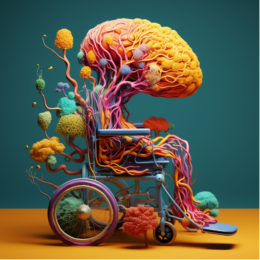How is Cerebral Palsy Diagnosed? (A Comprehensive Guide)

Cerebral palsy is a neurological disorder arising from a brain injury or malformation that occurs during the crucial stages of a child’s brain development. Primarily affecting body movement, muscle coordination, and balance, diagnosing cerebral palsy is often intricate and necessitates an extensive understanding of the process.
In this article, we’ll explore various aspects of cerebral palsy, including its causes, diagnostic procedures, and the prognosis for individuals living with this condition.
Statistics:
- According to the Centers for Disease Control and Prevention (CDC), approximately 1 in every 345 children in the United States is affected by cerebral palsy.
- An estimated 40% of children with cerebral palsy are diagnosed within their first year of life.
- Around 20% of cerebral palsy cases are not diagnosed until after the child has reached five years of age due to late-onset symptoms.
What Is Cerebral Palsy Caused by?
Cerebral palsy primarily results from a non-progressive brain injury occurring during the fetal or infant stages of development. The causes are multi-faceted and could include:
- Maternal infections during pregnancy: Certain infections, such as rubella, cytomegalovirus, or toxoplasmosis, can damage the developing brain in the fetus.
- Genetic disorders: Some genetic abnormalities can interfere with brain development, leading to cerebral palsy.
- Severe jaundice: If left untreated, high levels of bilirubin can cause brain damage, leading to cerebral palsy.
- Brain hemorrhage: Premature babies are particularly vulnerable to intraventricular hemorrhage, a type of bleeding in the brain that can result in cerebral palsy.
- Oxygen deprivation: Lack of oxygen during labor and delivery (asphyxia) can result in periventricular leukomalacia, a form of brain damage leading to cerebral palsy.
Statistics: The majority of cerebral palsy cases, around 85% to 90%, happen before or during birth. Acquired cerebral palsy accounts for approximately 10% to 15% of cases and typically results from infection or brain injury in early childhood.
How Is Cerebral Palsy Diagnosed?
Diagnosis of cerebral palsy is complex. It typically involves a series of evaluations, including a thorough medical history, neurological examination, and imaging studies like MRI, CT scans, or Ultrasound to view the brain’s structure. Specialists may also conduct developmental screenings to observe the child’s motor skills and muscle tone and look for characteristic signs such as spastic movements and difficulties with coordination and balance.
Difficulties in Diagnosing Cerebral Palsy
The vast range of symptoms associated with cerebral palsy, many of which mirror those of other neurological disorders, adds to the complexity of diagnosis. Another challenge is the non-progressive nature of the disorder – while the brain injury remains unchanged, the symptoms can evolve as the child develops. Therefore, clinicians often need to monitor the child over a period before confirming the diagnosis].

How Soon Can a Diagnosis Be Made?
While severe symptoms may allow for a diagnosis within a few months after birth, most diagnoses are made by the age of 2 years. For children with milder symptoms, the diagnostic process may take longer.
Statistics: Premature infants, who have a 5-10% risk of developing cerebral palsy, often receive an earlier diagnosis due to rigorous neurodevelopmental monitoring in neonatal follow-up programs.
How Long Do People with Cerebral Palsy Live?
The lifespan of individuals with cerebral palsy can differ widely, contingent on the severity of the condition, accompanying health conditions, and the quality of care. Many individuals with cerebral palsy can expect to lead a normal or near-normal lifespan.
Statistics: Studies indicate that adults with milder forms of cerebral palsy have life expectancies comparable to the general population
Conclusion
Cerebral palsy is a multifaceted disorder requiring a comprehensive approach to diagnosis. Despite the challenges it presents, with early intervention and appropriate care, individuals living with cerebral palsy can lead fulfilling and productive lives.
References:
- Centers for Disease Control and Prevention (CDC) (2021). “Data and Statistics for Cerebral Palsy.”
- National Institute of Neurological Disorders and Stroke (NINDS) (2021). “Cerebral Palsy: Hope Through Research.”
- Ashwal, S., et al. (2004). “Practice Parameter: Diagnostic assessment of the child with cerebral palsy.” Neurology.
- Shevell, M., et al. (2003). “Practice parameter: Evaluation of the child with global developmental delay.” Neurology.
- ACOG Committee Opinion No. 766 (2019). “Optimal goals for anesthesia care in neonates, infants, and children with cerebral palsy.”
- Strauss, D., et al. (2008). “Life expectancy in cerebral palsy: An update.” Developmental Medicine & Child Neurology.